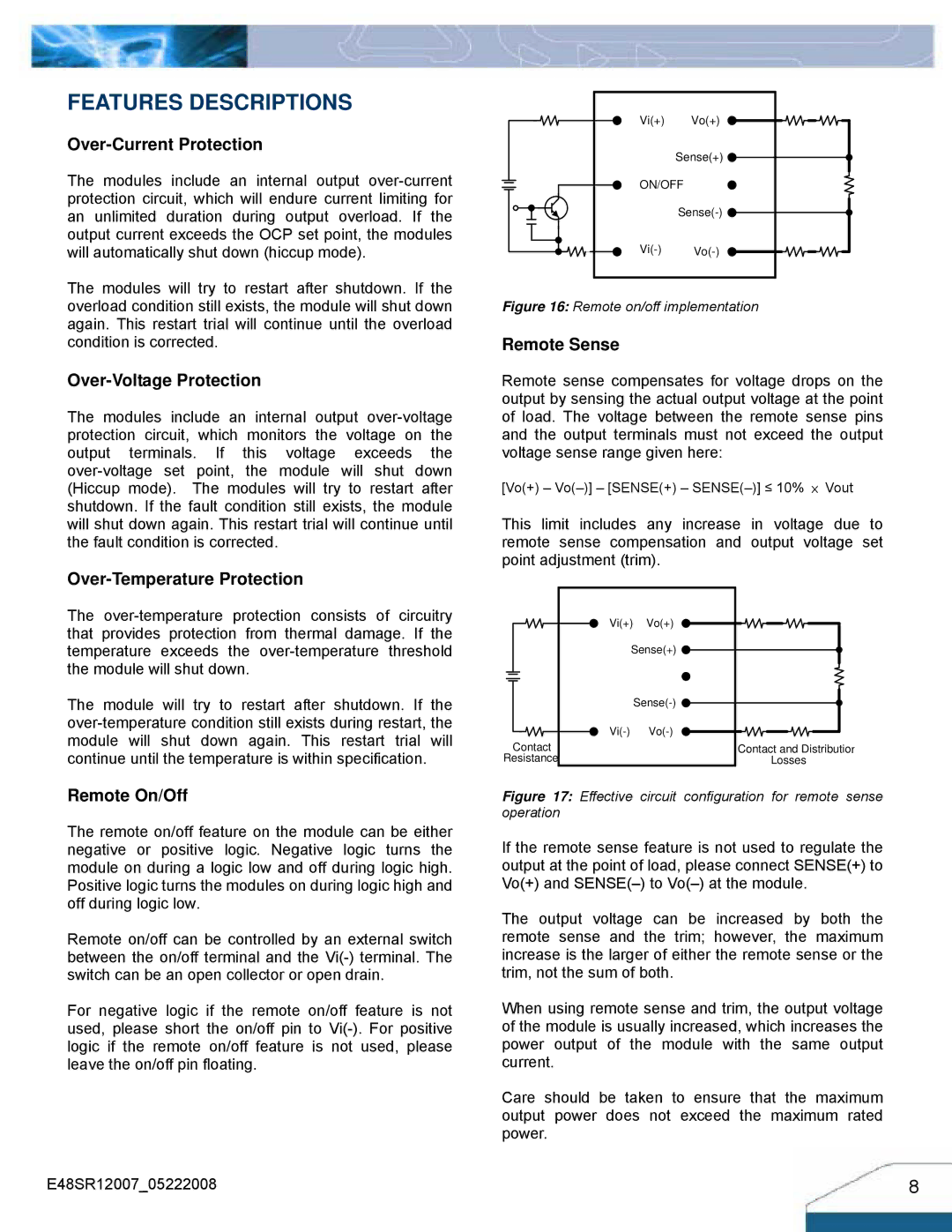E48SR12007 specifications
The Delta Electronics E48SR12007 is a high-performance power supply designed to meet the growing demands of industrial applications. With a focus on reliability and efficiency, this power supply is ideal for use in telecommunications, data centers, and various industrial automation systems.One of the main features of the E48SR12007 is its compact design, making it suitable for space-constrained environments. With a form factor that aligns with the industry standards, it allows for easy integration into existing systems without requiring significant modifications. This compactness does not compromise its power output, as it delivers a robust output of 1200W, providing ample power for high-demand applications.
A key technology incorporated into the E48SR12007 is its active power factor correction (PFC). This feature enhances the efficiency of the power supply by minimizing harmonic distortion and ensuring compliance with various international standards. By optimizing power usage, the power supply not only reduces operational costs but also contributes to a more sustainable energy footprint.
The E48SR12007 also boasts a wide input voltage range, accommodating variations in power supply from 40V to 72V, which makes it versatile across different geographical regions and applications. Furthermore, it features a low no-load power consumption, which is increasingly important given the economic and environmental focus on energy efficiency.
In terms of reliability, the E48SR12007 demonstrates outstanding performance with an MTBF (Mean Time Between Failures) of over 300,000 hours. This durability is complemented by built-in protection mechanisms, including over-voltage, over-current, and short-circuit protection, safeguarding sensitive equipment from potential damage.
Thermal management is another critical aspect of this power supply. The E48SR12007 utilizes advanced thermal design strategies, including optimal airflow and heat dissipation features, ensuring stable operation even in demanding conditions. The fan design is both efficient and quiet, catering to environments that require minimal acoustic interference.
In summary, the Delta Electronics E48SR12007 stands out with its compact design, robust power output, active PFC, extensive protection features, and impressive reliability. It is a reliable choice for industries seeking a power supply that combines efficiency with high performance, making it a popular selection among engineers and designers alike.

